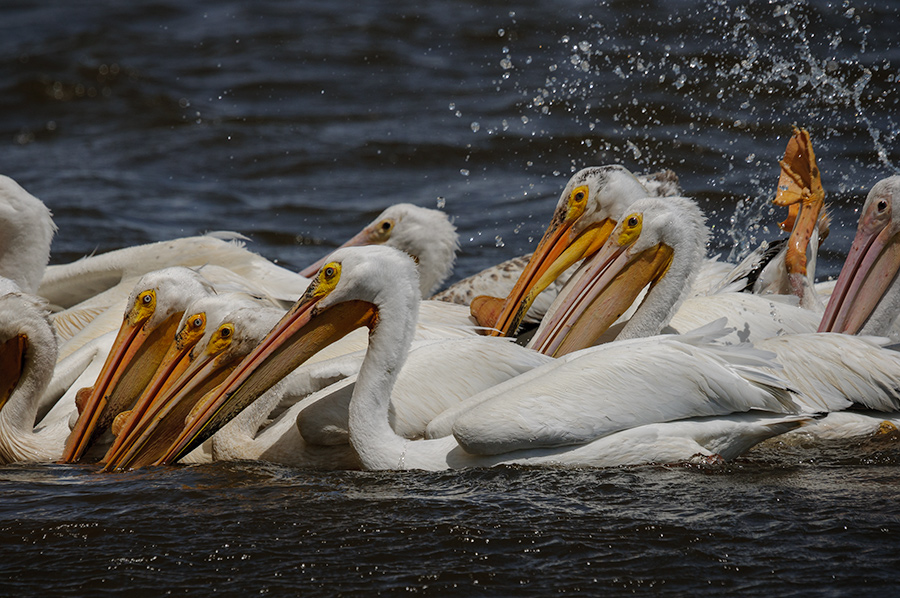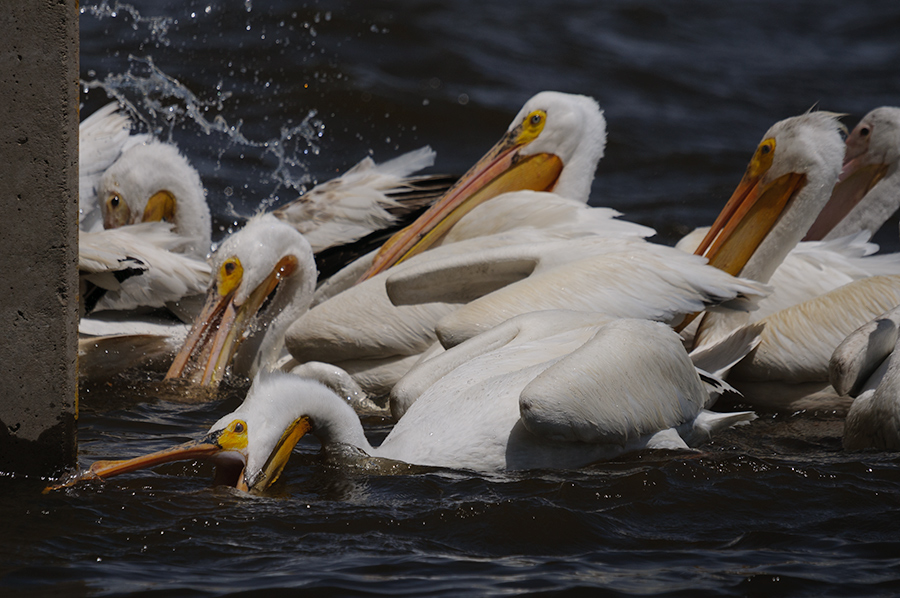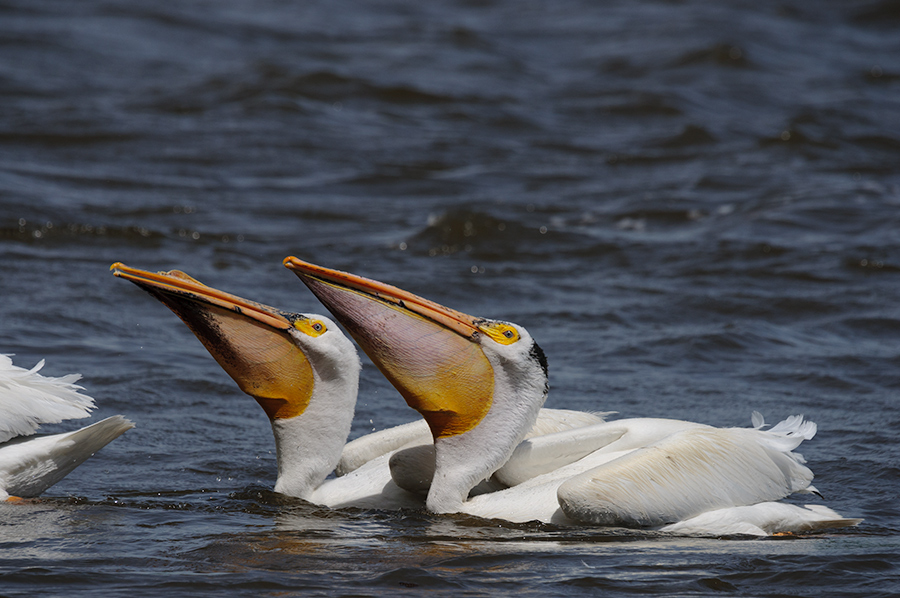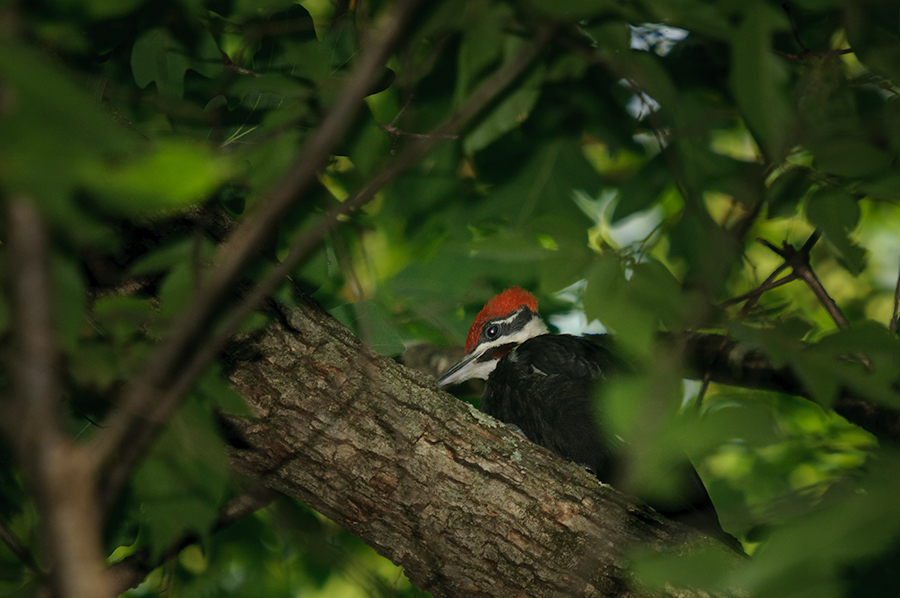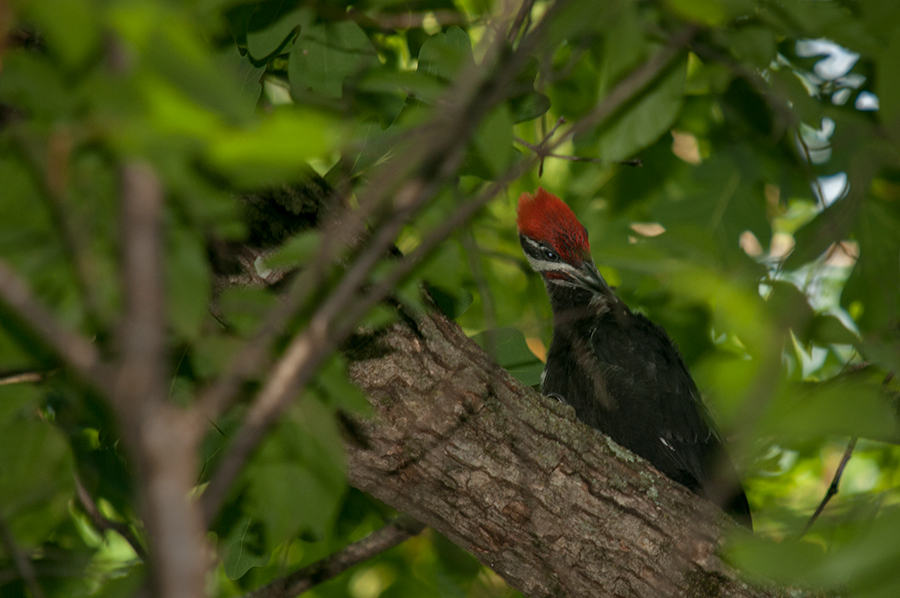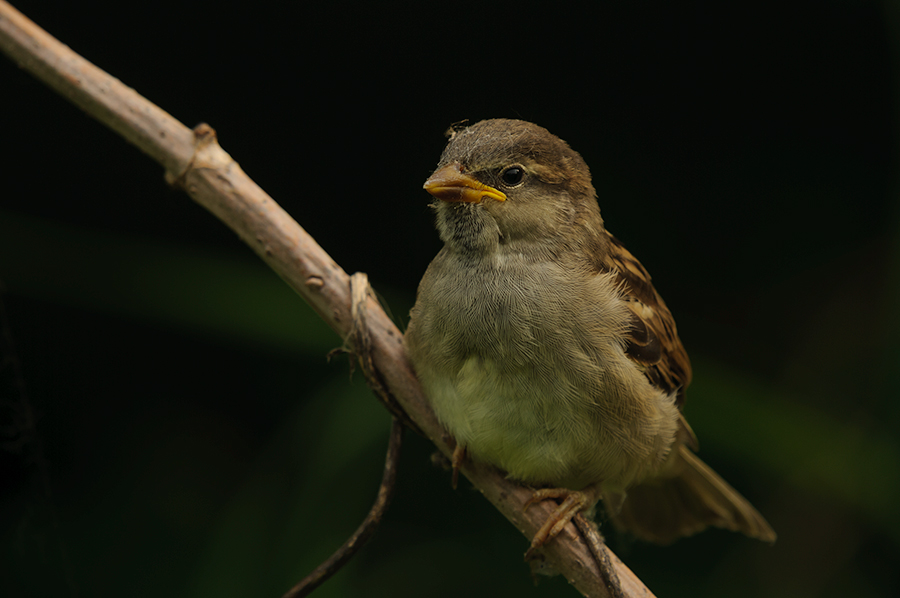
Today the young House Wrens left their nest, at least at one of the two bird boxes we have installed for them in our front yard. Early in the morning one little wren was already outside of the box, sitting on a branch, but he may have returned later. There was a lot of calling going on by the adult wrens during the day and this happens usually when they try to lure the offspring out of the nest. This evening I saw one juvenile wren leaving the nest box and finally flying into the trees around. The mother still continued to feed the rest of the gang at least a few more times. I left home for half an hour and after my return it was quiet in the nest box. The first brood in 2014 had left the nest.

When I made the first two images this morning during a thunderstorm I had already the feeling that the young wrens were about to leave the nest soon. Didn’t know it would happen that fast. The parents will probably take care for the offspring for a few more days and than hopefully get ready for another brood. A few days ago I saw one of the males already building another nest in one of the other boxes we have in the yard and he was calling for a female’s attention like crazy…


